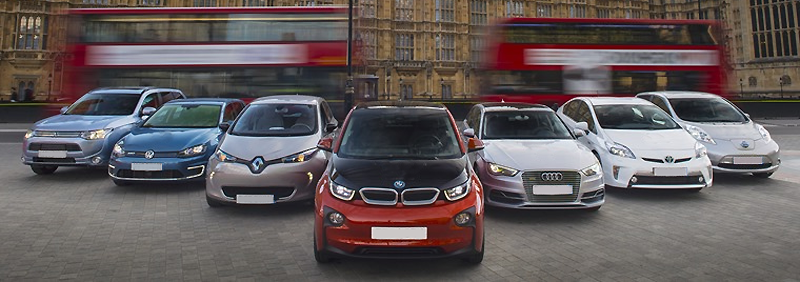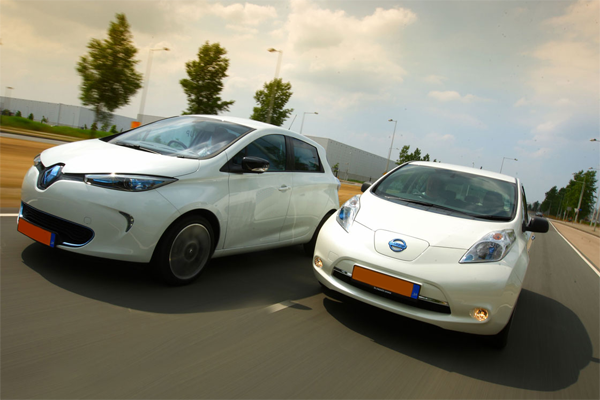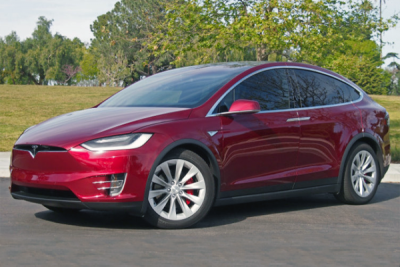 2016 is set to once again break a new record for both EV and PHEV sales in Europe, but mostly thanks to Plug-in hybrid cars. Sales of battery electric cars increased just 7% in the first three quarters of the year to 70.654 units, after improving by almost 50% in both 2015 and 2014. This means we’ll probably have to wait until 2017 to reach 100.000 annual EV sales in Europe, because a number of governments, most notably Denmark and Sweden, have dialed back on their EV incentives in 2016. Sales of Plug-in Hybrid Vehicles are also slowing down their growth curve, but still improved by 45% and look set top 100.000 sales this year already. Total sales of plug-in vehicles are up 24% to 151.912, or 1,3% of the overall market, compared to 1,1% in the first nine months of 2015.
2016 is set to once again break a new record for both EV and PHEV sales in Europe, but mostly thanks to Plug-in hybrid cars. Sales of battery electric cars increased just 7% in the first three quarters of the year to 70.654 units, after improving by almost 50% in both 2015 and 2014. This means we’ll probably have to wait until 2017 to reach 100.000 annual EV sales in Europe, because a number of governments, most notably Denmark and Sweden, have dialed back on their EV incentives in 2016. Sales of Plug-in Hybrid Vehicles are also slowing down their growth curve, but still improved by 45% and look set top 100.000 sales this year already. Total sales of plug-in vehicles are up 24% to 151.912, or 1,3% of the overall market, compared to 1,1% in the first nine months of 2015.
Note: clicking on the model name opens the sales data page for that model; clicking year in the legend turns the display for that year on/off
Electric cars
 The Renault Zoe takes over the crown of best selling electric car in Europe from the Nissan Leaf thanks to a 34% sales increase, even though Renault has already revealed the new 40kWh longer range version, which is expected to start sales in the last quarter. Meanwhile, the Leaf is set to increase sales as well this year, as it has done every year since its launch in late 2011. Contrastingly, the Tesla Model S is down by 12% after challenging the two much more affordable hatchbacks last year. Two factors are to blame for this: Tesla prioritizing the US for deliveries of the facelifted version, and the arrival of the Model X SUV in Q3. Still, the Model S holds on to its podium position as the Volkswagen e-Golf takes an even bigger hit at -36%, as its share of total Golf deliveries drops from 2,1% to just 1,4%.
The Renault Zoe takes over the crown of best selling electric car in Europe from the Nissan Leaf thanks to a 34% sales increase, even though Renault has already revealed the new 40kWh longer range version, which is expected to start sales in the last quarter. Meanwhile, the Leaf is set to increase sales as well this year, as it has done every year since its launch in late 2011. Contrastingly, the Tesla Model S is down by 12% after challenging the two much more affordable hatchbacks last year. Two factors are to blame for this: Tesla prioritizing the US for deliveries of the facelifted version, and the arrival of the Model X SUV in Q3. Still, the Model S holds on to its podium position as the Volkswagen e-Golf takes an even bigger hit at -36%, as its share of total Golf deliveries drops from 2,1% to just 1,4%.
 The BMW i3 was updated with the larger 33kWh battery pack in Q3 and that has helped the EV version (without the optional Range Extender) to grow by an estimated 68% this year. We say estimated because we don’t have official figures of the EV/REx split of the i3, but while it used to be 1/3 vs 2/3 before the larger battery was introduced, we have reliable sources quoting that this split has reversed since the update, as apparently 33kWh is enough to overcome range anxiety and save the extra 10K for the Range Extender. The Kia Soul EV also improves and increases its share of total Soul deliveries to almost 30%, while the Mercedes-Benz B-Class Electric Drive adds more than a third to its volume, and now has an EV share of more than 5% of B-Class sales.
The BMW i3 was updated with the larger 33kWh battery pack in Q3 and that has helped the EV version (without the optional Range Extender) to grow by an estimated 68% this year. We say estimated because we don’t have official figures of the EV/REx split of the i3, but while it used to be 1/3 vs 2/3 before the larger battery was introduced, we have reliable sources quoting that this split has reversed since the update, as apparently 33kWh is enough to overcome range anxiety and save the extra 10K for the Range Extender. The Kia Soul EV also improves and increases its share of total Soul deliveries to almost 30%, while the Mercedes-Benz B-Class Electric Drive adds more than a third to its volume, and now has an EV share of more than 5% of B-Class sales.
 Next up are the two commercial vans Renault Kangoo ZE and Nissan e-NV200, both available as a cargo version and a passenger version. EV sales are of both versions combined, while we only have data for total sales of the passenger versions, therefore we can’t calculate the EV take rate. The Tesla Model X, launched in August and already outsold the Model S in September, becoming the #2 best selling EV in Europe that month, after the Zoe. Keep in mind Tesla deliveries are always skewed to the last month of each quarter, but with a solid order book with unfulfilled orders, expect the Model X to be a top-5 player next year.
Next up are the two commercial vans Renault Kangoo ZE and Nissan e-NV200, both available as a cargo version and a passenger version. EV sales are of both versions combined, while we only have data for total sales of the passenger versions, therefore we can’t calculate the EV take rate. The Tesla Model X, launched in August and already outsold the Model S in September, becoming the #2 best selling EV in Europe that month, after the Zoe. Keep in mind Tesla deliveries are always skewed to the last month of each quarter, but with a solid order book with unfulfilled orders, expect the Model X to be a top-5 player next year.
After its diesel scandal, VW has vowed to focus its resources on becoming an EV leader to slowly replace diesel cars, but this year the brand is the big loser in the EV segment, with both of its models losing double digit volume. The e-Golf has been mentioned above, but the e-Up! also drops 22%, which means it’s now threatened by the Renault Twizy quadricycle. The two PSA clones of the Mitsubishi i-MiEV somehow keep improving, despite ever-increasing competition from better alternatives, and in contrast to the trend of their Japanese original, which is down by a third, even outsold by the limited-edition Citroën E-Mehari.
2016 Q1-Q3 EV sales Europe
| Electric Car Segment | 2016 Q3 | 2015 Q3 | Change | %EV 2016 | %EV 2015 | |
| 1 | Renault Zoe | 15.537 | 11.593 | 34% | 100% | 100% |
| 2 | Nissan Leaf | 14.343 | 12.662 | 13% | 100% | 100% |
| 3 | Tesla Model S | 8.973 | 10.158 | -12% | 100% | 100% |
| 4 | Volkswagen e-Golf | 5.525 | 8.665 | -36% | 1,4% | 2,1% |
| 5 | BMW i3 (est.) | 4.349 | 2.596 | 68% | 46,5% | 33,3% |
| 6 | Kia Soul EV | 3.184 | 2.897 | 10% | 29,8% | 26,1% |
| 7 | Mercedes-Benz B250e | 2.872 | 2.122 | 35% | 5,1% | 3,4% |
| 8 | Renault Kangoo ZE | 2.847 | 2.662 | 7% | – | – |
| 9 | Nissan e-NV200/Evalia | 2.347 | 2.358 | 0% | – | – |
| 10 | Tesla Model X | 1.889 | 0 | New | 100% | – |
| 11 | Volkswagen e-Up! | 1.699 | 2.191 | -22% | 2,3% | 2,7% |
| 12 | Renault Twizy | 1.568 | 1.533 | 2% | 100% | 100% |
| 13 | Peugeot iOn | 1.472 | 1.027 | 43% | 100% | 100% |
| 14 | Citroën C-Zero | 1.051 | 671 | 57% | 100% | 100% |
| 15 | Bolloré Blue Car | 753 | 751 | 0% | 100% | 100% |
| 16 | Citroën E-Mehari | 527 | 0 | New | 100% | – |
| 17 | Mitsubishi i-MiEV | 393 | 586 | -33% | 100% | 100% |
| Hyundai ix35 FCEV | 60 | 53 | 13% | 0,05% | 0,05% | |
| Segment total | 70.654 | 66.086 | 7% |
Plug-in Hybrid electric cars
 No change in the top of the ranking of Plug-in hybrid cars, with the Mitsubishi Outlander PHEV still the distant leader ahead of the Volkswagen Golf GTE, even though both lose volume with double digits. The Outlander’s PHEV share even drops below 50% for the first time since its launch. This is still much better than the Golf GTE which has a take rate of just 2,3%. In third place we now find the Volkswagen Passat GTE, outselling the Mercedes-Benc C-C350e, both with a take rate of around 5%, similar to the BMW 330e which is in 6th place behind the Volvo XC90 T8, which makes up more than a quarter of total XC90 sales, much higher than its main rivals BMW X5 40e (13%), Porsche Cayenne S e-Hybrid (17%) and the Audi Q7 e-Tron (<10%). The Golf GTE’s luxury clone Audi A3 e-Tron loses 42% of its volume and falls to #8 in the ranking. BMW is the best selling PHEV brand in Europe thanks to its five models. The plug-in version of the 2-Series Active Tourer also has a take rate of 5% of total sales of the model. And the brand doesn’t stop there, as it has also launched the 740e plug-in limousine and is planning a PHEV version of the all-new 5-Series in 2017.
No change in the top of the ranking of Plug-in hybrid cars, with the Mitsubishi Outlander PHEV still the distant leader ahead of the Volkswagen Golf GTE, even though both lose volume with double digits. The Outlander’s PHEV share even drops below 50% for the first time since its launch. This is still much better than the Golf GTE which has a take rate of just 2,3%. In third place we now find the Volkswagen Passat GTE, outselling the Mercedes-Benc C-C350e, both with a take rate of around 5%, similar to the BMW 330e which is in 6th place behind the Volvo XC90 T8, which makes up more than a quarter of total XC90 sales, much higher than its main rivals BMW X5 40e (13%), Porsche Cayenne S e-Hybrid (17%) and the Audi Q7 e-Tron (<10%). The Golf GTE’s luxury clone Audi A3 e-Tron loses 42% of its volume and falls to #8 in the ranking. BMW is the best selling PHEV brand in Europe thanks to its five models. The plug-in version of the 2-Series Active Tourer also has a take rate of 5% of total sales of the model. And the brand doesn’t stop there, as it has also launched the 740e plug-in limousine and is planning a PHEV version of the all-new 5-Series in 2017.
2016 Q1-Q3 PHEV sales Europe
| PHEV segment | 2016 Q3 |
2015 Q3 |
Change | % PHEV 2016 | % PHEV 2015 | |
| 1 | Mitsubishi Outlander PHEV | 14.983 | 19.574 | -23% | 48,6% | 63,0% |
| 2 | Volkswagen Golf GTE | 8.603 | 10.226 | -16% | 2,3% | 2,5% |
| 3 | Volkswagen Passat GTE | 7.724 | 248 | 3015% | 4,9% | 0,2% |
| 4 | Mercedes-Benz C350e | 6.988 | 2.245 | 211% | 5,2% | 1,7% |
| 5 | Volvo XC90 T8 Twin Engine | 6.835 | 0 | New | 25,9% | 0,0% |
| 6 | BMW 330e | 5.627 | 0 | New | 5,1% | 0,0% |
| 7 | BMW i3 (est.) | 4.998 | 5.192 | -4% | 53,5% | 66,7% |
| 8 | Audi A3 e-Tron | 4.601 | 7.964 | -42% | 3,1% | 5,2% |
| 9 | BMW X5 40e | 3.697 | 0 | New | 13,1% | 0,0% |
| 10 | BMW 225xe Active Tourer | 3.587 | 0 | New | 5% | 0% |
| 11 | Volvo V60 Twin Engine | 2.554 | 3.577 | -29% | 8,5% | 11,7% |
| 12 | Porsche Cayenne S e-Hybrid | 2.104 | 2.261 | -7% | 17,2% | 15,9% |
| 13 | Audi Q7 e-Tron | 1.630 | 0 | New | 6,7% | – |
| 14 | BMW i8 | 1.222 | 1.764 | -31% | 100% | 100% |
| 15 | Mercedes-Benz GLE500e | 1.059 | 0 | New | 4,7% | – |
| 16 | Mercedes-Benz GLC350e | 886 | 0 | New | 1,8% | – |
| Opel Ampera | 35 | 215 | -84% | 100% | 100% | |
| Segment total | 81.258 | 56.119 | 45% |
Click on any model to see its annual sales from 1997-2016 and monthly sales in 2012 to 2016, or use the dropdown menu in the top right of this site.
Car sales statistics are from the following countries: Austria, Belgium, Cyprus, Czech Republic, Denmark, Estonia, Finland, France, Germany, Great Britain, Greece, Hungary, Iceland, Ireland, Italy, Latvia, Lithuania, Luxembourg, Netherlands, Norway, Poland, Portugal, Romania, Slovakia, Slovenia, Spain, Sweden, Switzerland.
Sources: Manufacturers, ANDC, JATO Dynamics.

